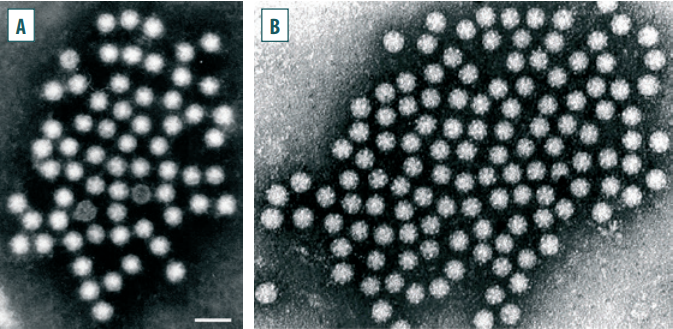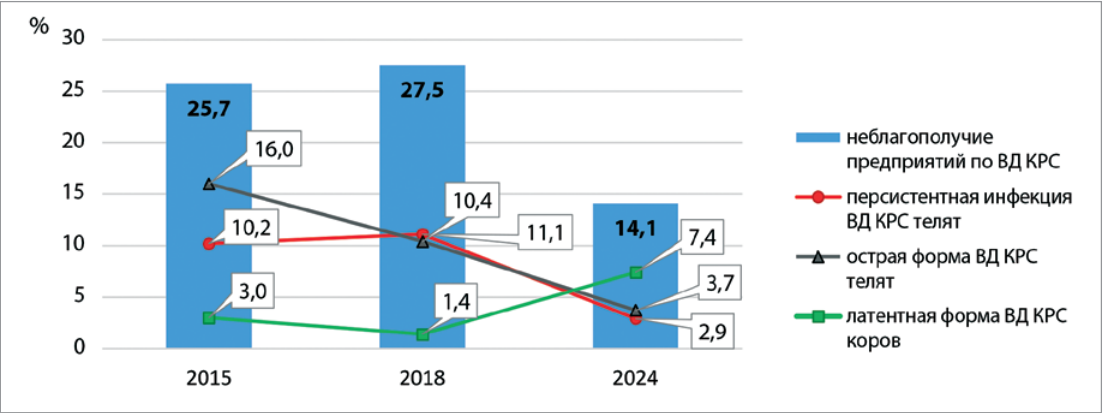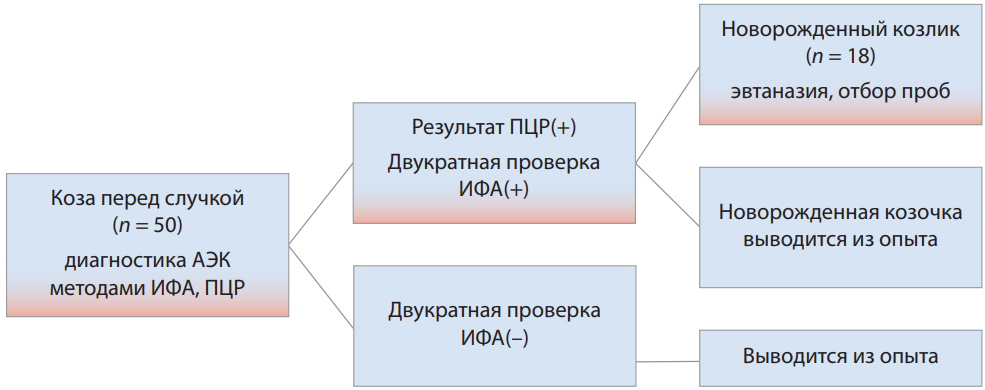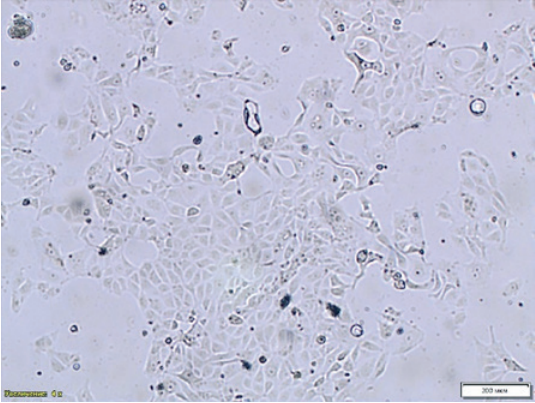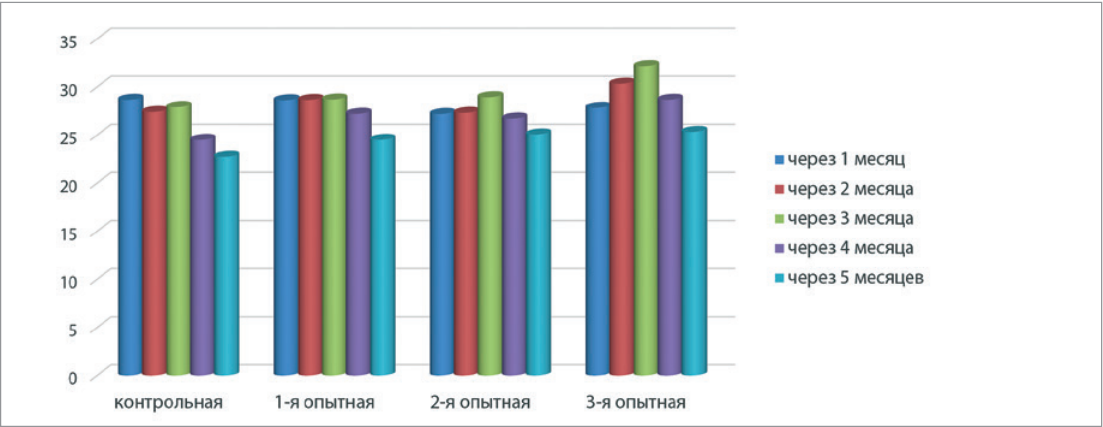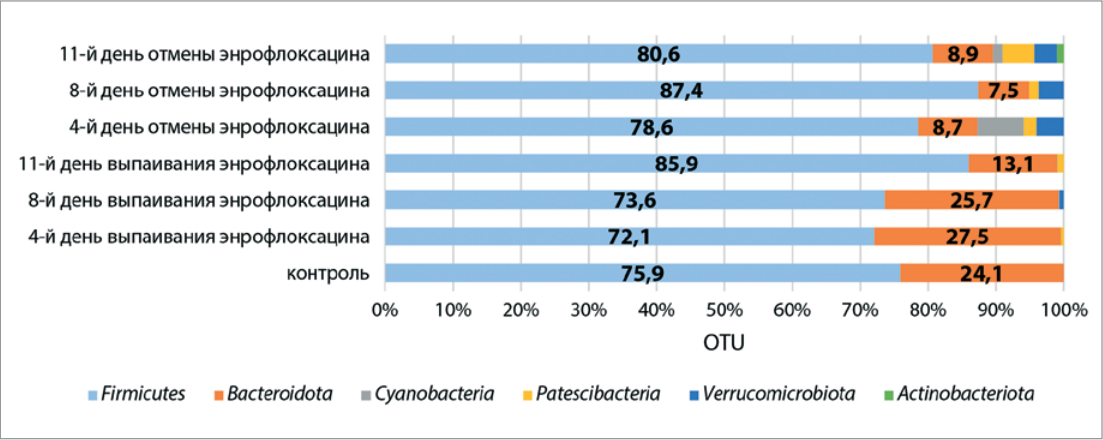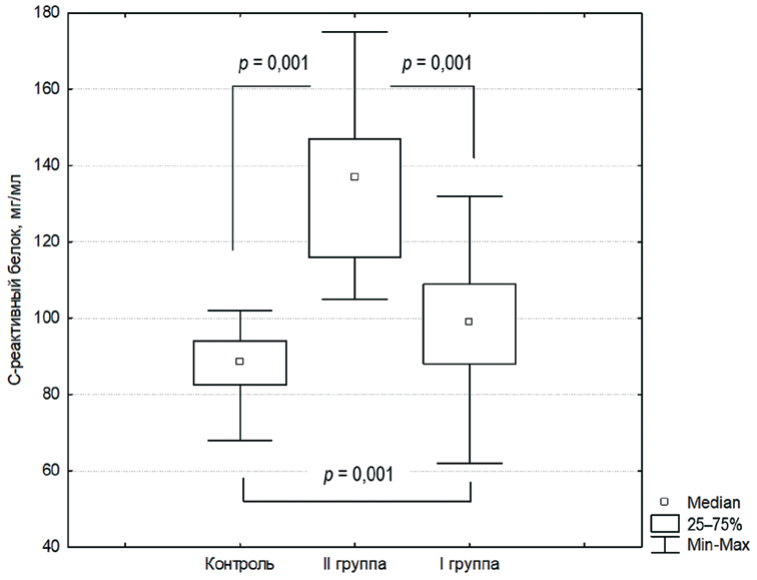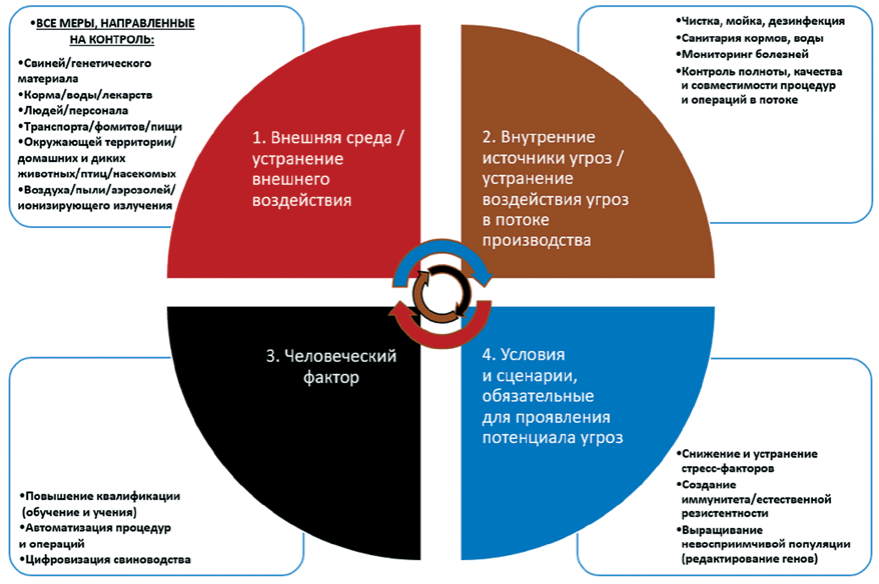REVIEWS | VETERINARY MICROBIOLOGY
Listeriosis is one of the most severe gastrointestinal diseases in the world. Listeria affect different groups of animals and birds. The pathogen has been detected in meat, milk, fish and fish products. The disease shows spring and autumn seasonality. It has been reliably established that Listeria monocytogenes is ubiquitous in the environment. Listeria monocytogenes is a facultative intracellular pathogen. Infection with Listeria monocytogenes causes an invasive disease in animals and humans, which is transmitted via the fecal-oral route from an animal to a human, from a mother to a fetus. The pathogenesis of Listeria infection has been well studied. The gastrointestinal tract is the site of the pathogenic Listeria species transit and spread. The infection incubation period is 20–30 days in animals and humans. The clinical course in different animal species, including birds, has a number of specific features. Listeria can cross the intestinal, placental and blood-brain barriers. The manifestations of listeriosis include encephalitis, meningitis, gastritis, meningoencephalitis, mastitis, abortions, endometritis, etc. Pathogenic Listeria species show hemolytic activity which non-pathogenic species (except Listeria seeligeri) lack. The review presents the up-to-date information on the classification of Listeria, the pathogenicity factors of Listeria monocytogenes as the major pathogen, the mechanisms of Listeria infection development in different animal species.
Fecal microbiota transplantation is a procedure when fecal matter from a healthy donor is administered into the intestinal tract of a recipient in order to restore microbial balance and strengthen immune responses. Mainly, fecal microbiota transplantation increases bacterial diversity and facilitates a growth in beneficial microorganisms. Thus, the procedure makes it possible to stabilize and maintain a healthy gut microbiome that inhibits the pathogen growth. In veterinary medicine, fecal microbiota transplantation is considered as a potential alternative to traditional antibiotics amid rising antibiotic resistance. Despite the lack of commonly accepted procedures, studies show that the fecal microbiota transplantation for the purposes of veterinary medicine can be used for a wide range of tasks: starting from disease prevention to immunomodulation. This review is devoted to the use of fecal microbiota transplantation for different animal species. An analysis of scientific literature suggests that most researches into the topic describe the use of fecal microbiota transplantation as a method to treat diarrhea, which is a common disorder in animals. Interestingly, the technique has been successfully used to treat canine atopic dermatitis and monitor age-related changes in fish, thus, confirming the universal nature of this procedure. There are research projects when fecal microbiota transplantation demonstrated only partial effectiveness or no effectiveness at all. Scientific evidence suggests that the effectiveness of fecal microbiota transplantation depends on the delivery route and the donor, and the first factor may have a different impact on the therapy effectiveness depending on the animal species under study. The impact of the second factor on the success of transplantation has been most widely studied for calves. Further research is needed into effects of fecal microbiota transplantation on different animals and standards need to be developed to support large-scale and safe use of the technique for animals.
REVIEWS | EPIZOOTOLOGY
Viral agents are a major cause of mass gastroenteritides in newborn calves in the countries around the world. Early postnatal diarrhea as the main reason of morbidity and mortality in young animals leads to serious problems in the commercial livestock farming and causes a considerable economic damage. The most common viral gastroenteritis agents in calves are rotaviruses, coronaviruses and pestiviruses, and, along with these, astroviruses are increasingly being detected. The members of the family Astroviridae can cause various pathologies in animals: enteritis, hepatitis and nephritis in birds, gastroenteritis, neurological syndromes and encephalitis in mammals. The role of these viruses in the etiology of respiratory pathology in animals has been demonstrated. The following animals are the natural hosts of astrovirus: cattle, small ruminants, camels, deer, yaks, roe deer, buffaloes, alpacas, pigs, wild boars. The virus has been detected in bats, rodents and marine mammals, as well as in mollusks. Presently, the list of animals susceptible to astrovirus infection has expanded to over 80 species from 22 families, including domestic, synanthropic and wild animals, birds and mammals living in the terrestrial and aquatic environments. In recent times, there has been a lot of evidence of occurrence of recombinant astrovirus isolates, which contributes to the emergence of new genetic variants of the pathogen. A wide variety of infected animal species, the genetic diversity of the virus and the recombination events are indicative either of the cross-species transmission and subsequent adaptation of the virus to new hosts, or of the coinfection of the same host with different virus genotypes, which may lead to the emergence of novel astroviruses that are capable of infecting animals or possess a zoonotic potential. Astrovirus infection has no specific clinical features that allow for its differentiation from other intestinal infections. The presented data highlight the necessity for taking into account astrovirus infection when testing pathological material samples from diarrhea-affected newborn calves, lambs, goat kids and piglets on the commercial farms of the country.
ORIGINAL ARTICLES | BOVINE DISEASES
The paper presents results of comprehensive studies of the bovine viral diarrhea virus circulating in cattle populations in the Sverdlovsk Oblast. In 2018–2024, 113 biological samples were tested using polymerase chain reaction, the viral RNA specific regions were detected in 15.9% of cases.The BVDV RNA was isolated from biological samples collected from aborted cows (61.1%) and calves under one month of age (38.9%). Based on typing results, the virus isolates detected in four samples (nasopharyngeal swabs of calves, suspension prepared from aborted fetus organs and placenta) were classified as BVDV-1 virulent genotypes. The BVDV RNA, Mycoplasma bovis and Chlamydophila pecorum DNAs were detected simultaneously in 44% of vaginal swab samples from aborted cows and, in single cases, in the placenta and parenchymatous organs of dead calves; BVDV RNA and Bovine herpesvirus type 1 DNA were detected in 16% of pathological samples from dead calves. In some cases, the BVDV RNA, Chlamydophila pecorum and Mycoplasma bovigenitalium DNA were detected in nasopharyngeal swabs of calves. The “Comprehensive Programme for Biosecurity and Bovine Viral Diarrhea Situation Improvement in Agricultural Organizations”implemented in the Sverdlovsk Oblast in 2018 resulted in decreased number of agricultural establishments affected by bovine viral diarrhea. Acute and persistent infection forms among young animals were recorded 4 and 3.5 times less frequently, respectively, but at the same time, a 2.5-fold increase in the diagnosed latent form of the disease was observed in adult livestock, which is associated with an increase in the number of laboratory tests performed.
ORIGINAL ARTICLES | DISEASES OF SMALL PETS
Caprine arthritis-encephalitis is a serious challenge for the modern goat breeding both in Russia and abroad. The disease is quite widespread in our country, causing serious economic damage to the backyard and family-operated farm owners. The etiologic agent of caprine arthritis-encephalitis (CAE) is a virus of the Retroviridae family, which is part of the group of small ruminant lentiviruses subdivided into five genetic groups. A number of reasons prevent timely disease diagnosis, for example, lack of a legal framework regulating preventive measures, prolonged asymptomatic virus-carrier state, and absence of pathognomonic symptoms. There are two routes of the CAE virus spread: vertical (lactogenic), when colostrum or milk from a seropositive goat serves as a transmission factor; and horizontal – from a diseased animal to a healthy one in case of crowded housing, feeding from common drinkers and feeders, as well as during mating. The published data on the possibility of the intrauterine virus transmission from mother to fetus are diametrically different. The purpose of this study was to explore the possibility of intrauterine infection with the CAE virus. Pregnant goats with ELISAand PCR-confirmed CAE diagnosis were used in the study. Pathological material was collected from newborn goats obtained by sterile kidding, and the samples were PCR tested for the CAE causative agent. None of the tested samples demonstrated CAE that gives evidence of absence of the fact of intrauterine virus transmission from the diseased mother to the fetus. Results of long-term monitoring of the goat population kept on two backyards located in the Southern Federal District and Novosibirsk Oblast comprise an indirect evidence of that. The owners of these backyards, where 100% of the goat population were infected with CAE virus, decided to carry out a complex of the disease control measures. Sterile kidding followed by kids’feeding with colostrum and milk pasteurized at 60 °C for 30 minutes with the subsequent use of a whole milk substitute allowed to obtain a CAE-free herd in two years avoiding any significant economic losses and purchase of healthy animals from other farms.
ORIGINAL ARTICLES | PORCINE DISEASES
African swine fever (ASF) is a hemorrhagic viral disease that brings serious implications for animal health and economy due to high mortality rate, quarantine measures and restrictions on international trade in pig products. Only domestic and wild species of the Suidae family of all breeds and ages are susceptible to infection with ASF virus. To date, no safe and effective ASF vaccines have been developed, but in recent years some progress has been made in development of ASF modified live virus first-generation vaccine candidates, which have been used only in some countries of Southeast Asia. The expansion of their use is hindered, among other things, due to the lack of international and state recommendations (requirements) for the evaluation of purity, activity, safety and effectiveness of ASF vaccine candidates. Clinical signs of the disease are one of the main indicators of safety and effectiveness of ASF modified live virus vaccine candidates. The purpose of this work was to develop a clinical symptom-based scoring system to be used for characterizing of newly recovered ASFV isolates causing various forms of the disease, as well as for the determination of safety and effectiveness of ASF modified live virus vaccine candidates. It is proposed to take into account 7 major clinical manifestations: an increase in body temperature, reduced liveliness, loss of appetite, skin lesions, joint swelling, laboured breathing, neurological disorders, each scored from 0 to 3 or 4. The study of twelve ASFV strains of various virulence revealed that acute and subacute ASF produce the maximum clinical scores ranged from 13 to 22, chronic form gives 6–18 points, subclinical form is scored 0–8.
ORIGINAL ARTICLES | DISEASES OF SMALL PETS
Adenovirus infection in dogs caused by canine adenovirus serotype 2 predominantly results in respiratory disease typically manifested by respiratory tract lesions. Infectious laryngotracheitis is the most often recorded in dogs in the central part of the Russian Federation and its incidence tends to increase. Therefore, preventive immunization against this disease remains important. Primarily, the virus strains currently important and circulating in the particular territory shall be used for vaccine production to induce long-term and strong immunity in animals. The study was aimed at isolation of canine adenovirus type 2 remaining stable during five or more passages from the biological samples collected from animals with adenovirus infection signs as well as at determination of its cultivation parameters. As a result, five virus isolates were recovered, one of the recovered virus isolates had optimal properties for its use for vaccine production. Comparative analysis of continuous Vero, MDCK (NBL-2 and NBL-9 line) cell cultures as well as primarily trypsinized cell cultures (baby dog kidney, baby dog spleen, baby cat kidney, baby cat spleen) for their susceptibility to the recovered virus showed that MDCK (NBL-2 line) was the most susceptible. The virus cultivation parameters in this cell culture was determined at the next step. The following optimal conditions under which the virus accumulated to the maximum titres were determined: cell culture monolayer age for inoculation – 48 hours, multiplicity of infection – 0.01 TCID50/cell, preliminary holding time – 60 min, temperature – (37.0 ± 0.5) °С, cultivation period – 120 hours.
ORIGINAL ARTICLES | VETERINARY MICROBIOLOGY
The high contagiousness of staphylococcal infections and emergence of antimicrobial resistant strains call for search and development of new highly effective drugs and vaccines against infectious animal diseases. Twenty adult pregnant black pied cows were used to form a test and a control groups (10 animals per group). The vaccine was administered twice subcutaneously in the middle third of the neck of the test animals: the first dose in a volume of 3 mL 55–70 days before calving, the second dose in the same volume 25–30 days before the expected calving. Control animals were injected subcutaneously with the same volume of sterile saline at the same dates. To evaluate the antigenicity of the vaccine against Staphylococcus aureus, blood was collected from animals of both groups: in the test group 14–16 days after booster vaccination, in the control group 14–16 days after second injection of the sterile saline. For bacteriological testing, milk samples from both groups were collected during the first month of lactation after calving. According to the results of serological testing, the antibody titer against Staphylococcus aureus in the test group ranged from 4.01 to 4.61 lg, its mean value was (4.34 ± 0.06) lg. In the test group, the mean antibody titers against Staphylococcus aureus were 5.8 times lower and were equal to (0.75 ± 0.09) lg with fluctuations from 0.3 to 1.2 lg. The bacteriological tests of milk in the control group revealed Staphylococcus aureus in 5 out of 10 samples, which is 50%. In the test group, the pathogen was detected in 20% of cases, which is 2.5 times lower than in the control group.
The purpose of the research was to study parameters of immune status and milk yields in those cows that received a bacterial supplement containing live bacteria Bacillus subtilis strains B-239906 and B-249909 and their metabolites during a transition period. Animals in the experimental groups (10 animals in each) received the microbial supplement according to the following schemes: 14 days before calving (group 1), 14 days after calving (group 2), 14 days before and 14 after calving (group 3). Group 4 (n = 10) was a control one. On day 14 and day 28 after calving, the relative level of T-lymphocytes in blood of control cows and experimental group 2 did not significantly change compared with the level observed on day 1 after calving. While in groups 1 and 3, this indicator increased by 1.2–1.6 times throughout the whole experiment. In all cow groups, B-lymphocyte dynamics during the observation period was similar, i.e. an increase by day 14 and a decrease by day 28. The phagocytic activity of neutrophils in animals of all groups changed slightly. At the same time, the phagocytic index increased by 2.5–3.2 times throughout the experiment, which indicated an increase in nonspecific resistance of the body. Peak milk yields were recorded in cows of all experimental groups on day 90 of lactation. The maximum level (32.17 ± 3.33 kg) was observed in group 3. Within 150 days of observations, the average daily milk yields in animals of the experimental groups were: 24.50 ± 4.15 kg in group 1; 25.07 ± 4.38 kg in group 2; 25.33 ± 2.52 kg in group 3 and 22.75 ± 8.82 kg in the control group. The mass fraction of milk fat in all groups had no statistically significant differences throughout the entire observation period.
The diversity of gut microbiota is an important ecological resource that plays a key role in maintenance of the host homeostasis. It is extremely important to preserve the existing gut microbiota diversity, which ensures its resistance to the negative effects of abiotic factors, while the study of the antibiotic role in the disturbance of microbiota diversity is a fundamental basis used not only to identify aspects responsible for microbiota-associated poultry diseases, but also to learn techniques of microbiota management. This study gives a characteristic of poultry gut microbiota diversity before and after antibiotic administration based on 16S rRNA gene sequencing analysis. Firmicutes and Bacteroidota species were predominantly detected in the chick microbiota during antibiotic administration and after its withdrawal. A significant increase in Patescibacteria abundance was observed on day 11 post enrofloxacin cessation. Actinobacteriota started appearing on day 11 after antibiotic discontinuation. An increase in Cyanobacteria abundance was detected on day 4 after the drug withdrawal. Taxonomic shifts in the chick microbial community structure at the class level both during the antibiotic treatment and after its withdrawal were observed. The abundance of Clostridia and Bacteroidia classes tended to decrease, while Bacilli class increased in its abundance, especially on day 8 after the drug withdrawal. It was found that a ten-day course of enrofloxacin treatment at the recommended doses leads to an increase in the abundance of Bacillaceae, Gastranaerophilales, Lactobacillaceae, Bacteroidaceae, Bifidobacteriaceae families, while the abundance of Rikenellaceae, Erysipelatoclostridiaceae, Clostridiaceae, Ruminococcaceae decreased and did not affect the abundance of Lachnospiraceae family. The revealed increase in the proportion of Lactobacillaceae during antibiotic treatment suggests the ability of a healthy organism to restore the microbiota balance. The results of metagenomic data bioinformatics (without truncation) showed the presence of 158 microorganism species in the chick microbiota, 38% of which were classified as nonculturable.
ORIGINAL ARTICLES | GENERAL ISSUES
The study was targeted at the examination of the effect of the specific immunomodulator KIM-M2 on the morphostructure of liver cells of guinea pigs infected with nontuberculosis mycobacteria. The research was carried out in 15 guinea pigs selected by gender at the Diagnostic Research and Biotechnology Laboratory of the Department of Veterinary Medicine of the Omsk Agrarian Scientific Center. All animals were kept in a specialized animal keeping facilities according to standard housing and feeding regime. The experimental animals were subdivided into three groups of five animals in each: group 1 – challenge group (Mycobacterium scrofulaceum), group 2 – experimental group (Mycobacterium scrofulaceum and KIM-M2), group 3 – pure control group (saline solution). On day 30 after the start of the experiment, the animals were removed from the experiment, liver biopsy samples were collected and histologic specimens were prepared according to the classical method. During the experiment, it was found that KIM-M2 had a regenerative effect on the liver tissue of the guinea pigs infected with nontuberculosis mycobacteria, which was associated with 1.5-fold increase in the number of mononuclear hepatocytes, 3-fold increase in binuclear cells and 4.3-fold decrease in anucleate hepatocytes thus indicating the manifestation of compensatory reactions in the organ and increase in the depth of regenerative processes. As for animals in group 1; 1.8and 1.3-fold increase in the area of the nucleus and cytoplasm as compared with the individuals in group 2, and 2.7and 2-fold increase as compared with the animals in the control group, respectively, indicated the launch of the accumulation mechanisms of the potential reparative reserves and increase in their depth in the liver tissues.
Veterinary specialists have lately observed comorbidity of heart and kidney diseases known as cardiorenal syndrome. Cardiorenal syndrome is typically defined as dysfunction of a primarily intact kidney under the influence of a complex of pathogenetic damaging factors that arise against the background of an underlying cardiac disease. The purpose of the work is to study the biochemical profile of blood serum in cats with cardiorenal syndrome arising against the background of hypertrophic cardiomyopathy. The studies were carried out on 24 physiologically healthy (control) cats, 24 diseased cats with uncomplicated forms of pathology (first group) and 25 cats with hypertrophic cardiomyopathy complicated by cardiorenal syndrome (second group). It was shown that cardiorenal syndrome may occur as a complication of hypertrophic cardiomyopathy in animals. Biochemical tests in animals with feline cardiorenal syndrome verified cytolysis of cardiomyocytes (increased serum activity of lactate dehydrogenase by 2.69 times, creatine phosphokinase by 2.02 times, increased serum concentration of cardiac troponin by 5.20 times as compared to healthy animals), azotemia (increased concentration in serum creatinine by 2.72 times, urea by 2.94 times, symmetric dimethylarginine by 2.60 times and cystatin C by 1.90 times as compared to healthy animals), enhanced ketogenesis, systemic inflammatory process (increased serum concentration of C-reactive protein by 1.55 times as compared to healthy animals), hypercholesterolemia, oxidative stress (decrease in serum activity of superoxide dismutase by 1.63 times, catalase by 4.67 times and glutathione peroxidase by 1.71 times, increase in the concentration of malondialdehyde by 1.79 times, ceruloplasmin by 2.50 times and diene conjugates by 1.85 times as compared to healthy animals), electrolyte imbalance in the form of hyperkalemia, hyponatremia, hyperphosphatemia and hypomagnesemia. Biochemical indicators such as serum concentrations of creatinine, troponin I, cystatin C, symmetric dimethylarginine and C-reactive protein can be considered reliable diagnostic markers for the presence of cardiorenal syndrome.
The analysis of the situation on management of main epizootic threats significant for pig industry in the Russian Federation was carried out. The features and effectiveness of various biosecurity measures used in pig holdings and possible ways for their improvement were examined. Options for improvement of biosecurity measures in Russian pig holdings and development of the systems in the Russian Federation having favorable effect on the population protection were discussed focusing on four target aspects related to infection introduction and spread routes: isolation of the population from external sources of threats (elimination of probable environmental impact scenarios); isolation of the population from internal sources of threats (elimination of probable impact scenarios during production process); isolation of the pig population or pig farming system from the human factor impact (elimination of possible scenarios of human factor impact on the population); isolation of the population from the conditions under which the threat potential is manifested (changing of conditions). The analysis results were presented graphically in the form of a schematic diagram“Sources of threats to biosecurity systems and measures aimed at these sources for the protected population creation in pig industry”. Based on the discussion results, automation and digitalization of all processes in pig industry, generation of genetically modified pigs not susceptible to the most significant pathogens such as African swine fever, classical swine fever, porcine reproductive and respiratory syndrome viruses and their use for production purposes, further research and implementation of integrated technological solutions for feed sanitation have been concluded to be the evolutionarily significant ways for effective pig farming intensification in the Russian Federation.
ISSN 2658-6959 (Online)




